This Brand New Civil War Monument Celebrates Black Troops
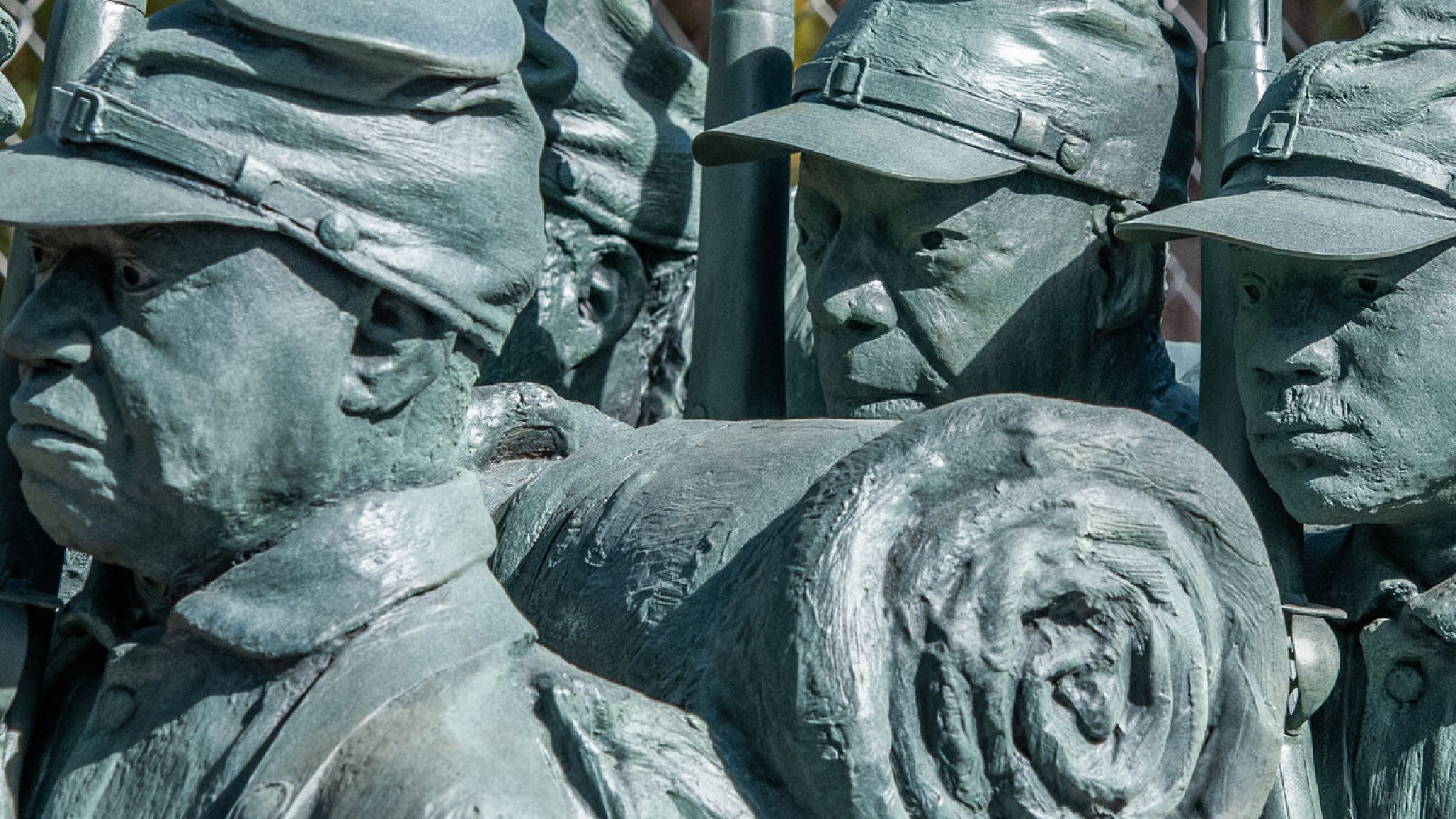
Alan Cradick/Handout/Cameron Art Museum
A new sculpture in Wilmington, NC, demolishes the cliché of mounted white men on horseback by immortalizing the Black foot soldiers who helped liberate the city.
Robert E. Lee no longer rides high above Richmond’s Monument Avenue. Dozens of statues of other Confederate heroes have come tumbling down across the South as the nation engages in a long-overdue reckoning with the freighted legacy of the Civil War. But on a recent balmy Saturday morning, a thousand people gathered to witness a very different kind of ceremony on the grounds of the Cameron Art Museum in Wilmington, N.C.
They did not come to see the toppling of an old Civil War monument. They came to see the unveiling of a new monument that consists of 11 bronze figures—nine marching soldiers, a flag bearer and a drummer boy. It is a new Civil War monument. But this is no conventional homage to fallen Confederate heroes. Quite the opposite. The life-size figures are African Americans and, what’s more, they depict members of the Fifth Regiment of the U.S. Colored Troops who led the charge in the Battle of Forks Road on this very spot on the afternoon of Feb. 20, 1865. After two days of nearly suicidal attacks on the entrenched Confederates, the Union troops finally prevailed, then marched the last miles into the heart of Wilmington, where they were greeted by cheering citizens, Black and white. The fall of the Confederacy’s only remaining lifeline to the outside world was the war’s final dagger: 46 days later, Lee surrendered at Appomattox.
Stephen Hayes, the Durham-based artist who created the sculpture, which he calls “Boundless,” is thrilled to be part of the historical reckoning—and possible reconciliation—that is finally taking place a century and a half after the end of American slavery.
“Artists get to ask questions and connect people,” he told me the day before his creation was unveiled to the pubic. “I asked myself, what would be the conversation between my sculpture and Confederate memorials? What would they say to each other?”
More than half of the 2,000 Union casualties in the battles for Wilmington were members of the U.S. Colored Troops, known as the USCT, yet until now they went unrecognized. Credit for righting this historical oversight goes largely to the staff of Wilmington’s Cameron Art Museum, including its director, Anne Brennan, and deputy director, Heather Wilson, and to local historian Chris Fonvielle, who has written a book about the once-neglected Battle of Forks Road.
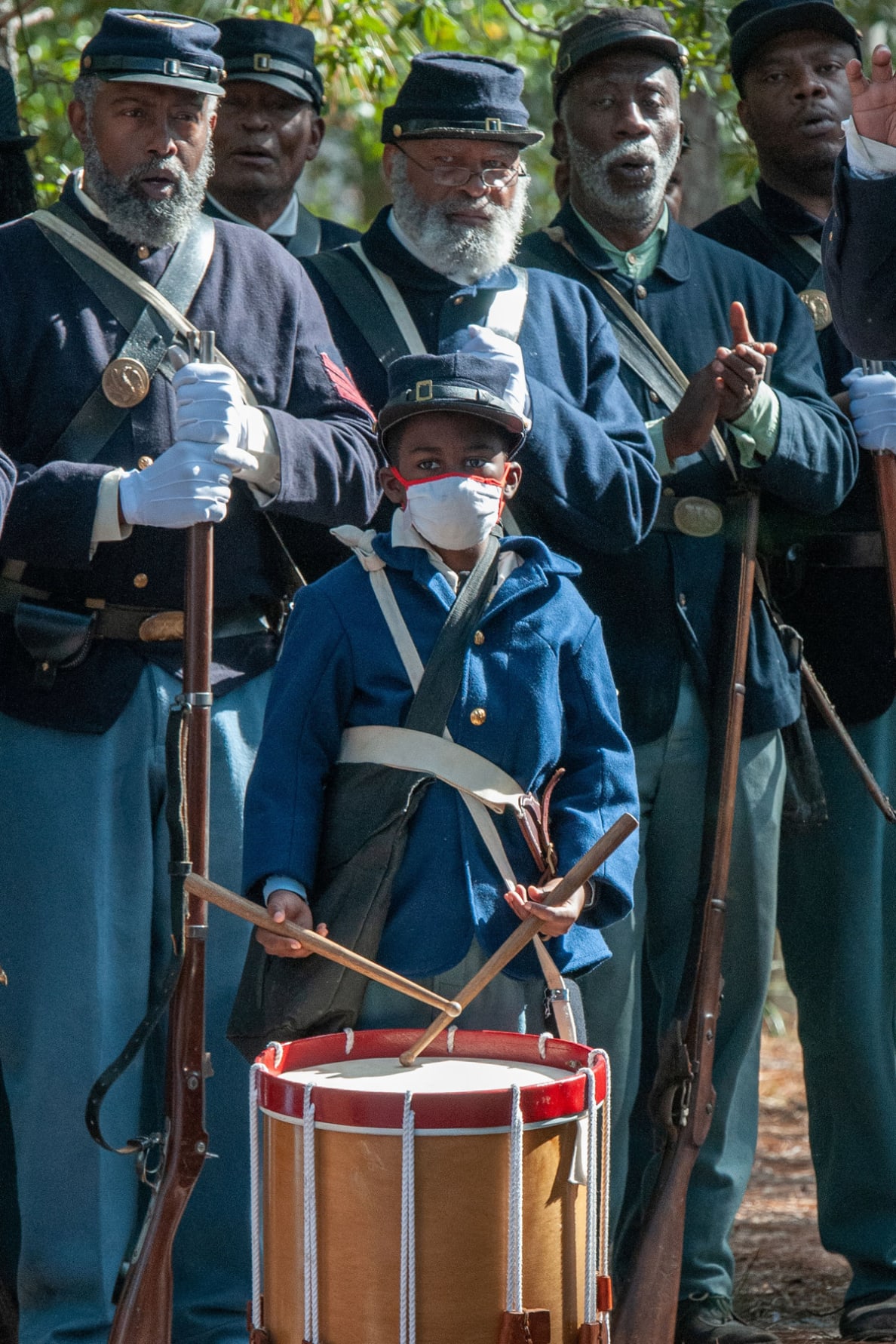
Alan Cradick/Handout/Cameron Art Museum
“We’re the only art museum that is steward of a Civil War site,” Wilson, a 45-year-old North Carolina native, told me. “About 13 years ago, we started talking about how amazing it would be to commission an African American artist to commemorate the service of African American soldiers here. This story is important to African American history, and we wanted to bridge the gap between the art museum and the Civil War site. This was before people started taking down Confederate monuments.”
Museum staffers got in touch with the N.C. Arts Council and with other museums, seeking recommendations of artists who might be up to the challenge. The name on the top of every list was Stephen Hayes.
One day while teaching a drawing class, Hayes got an email from Wilson, informing him about the nascent project and the museum’s quest for a grant. They started talking, Hayes submitted sketches, and eventually a $50,000 grant from the Z. Smith Reynolds Foundation and other funding was secured—a total of $400,000. Originally, Hayes said, his concept was to sculpt a single pair of soldier’s boots, but that idea morphed into the group of 11 life-size, realistic figures, boots on the ground, marching. “My passion lies in creating work to change the narrative,” Hayes told the local Port City Daily. “I want to change how other people see somebody who looks like me.”
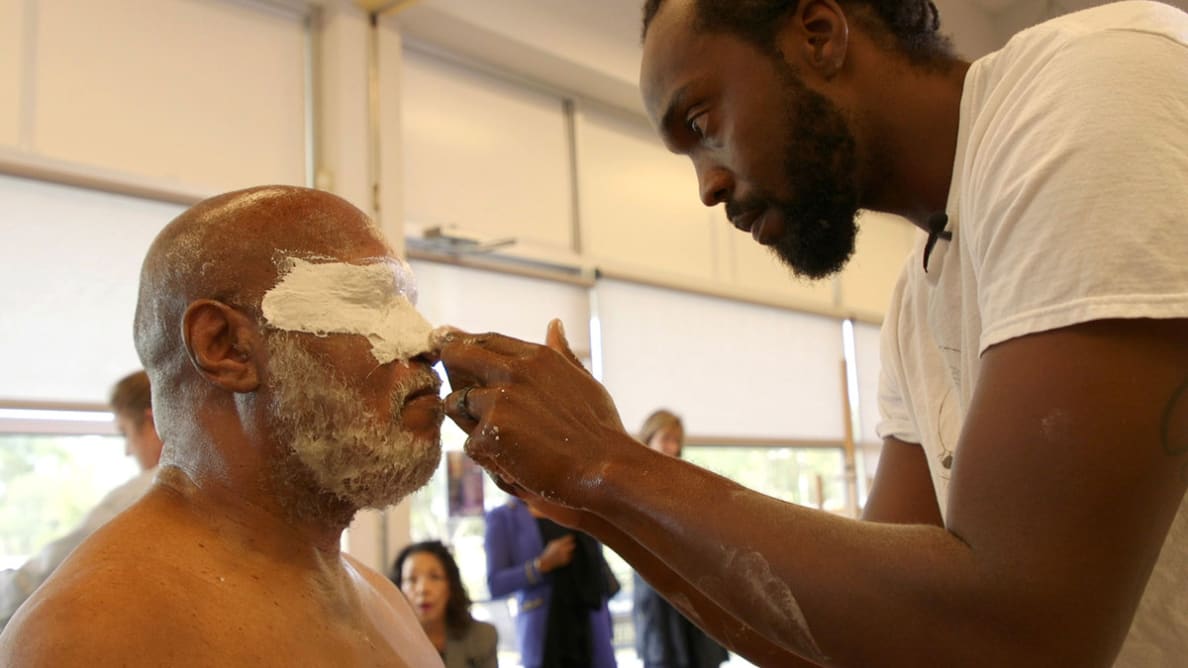
Handout/Cameron Art Museum
Wilson added that Augustus Saint-Gaudens’ famous monument to Robert Gould Shaw and the Massachusetts 54th Colored Regiment, which stands in Boston Common, was a model—though it was decided to do away with the white officer on horseback hovering above Black foot soldiers under his command. “We wanted this sculpture to be active and powerful, with the focus on the African American soldiers,” she said. “We wanted this to be on the ground, approachable. We wanted African American citizens to look at these figures and say, ‘That person looks like me.’”
Hayes, 38, grew up in Durham, N.C., where he still lives and teaches, and he’s well versed in Wilmington’s dark racial history. In the late 19th century, Wilmington was a rare success story in the post-Reconstruction South, where a Fusion government of Black and white officials, both elected and appointed, ran a city that was prosperous, racially integrated, and largely peaceful. White supremacists weren’t having it. They rigged the 1898 election, toppled the elected government, installed their hand-picked replacements, then gunned down more than 60 African Americans and chased thousands more out of town.
Soon afterward the city erected two statues to the Lost Cause of the Confederacy. They stood downtown until the summer of 2020, when they were removed as part of the city’s attempt at a racial reconciliation during the Black Lives Matter protests over the police killing of George Floyd. The need for reconciliation became apparent that summer when three white Wilmington police officers were fired after their virulently racist conversation was accidentally recorded.
“We’re just going to go out and start slaughtering the fucking n-----s,” Officer Michael Piner said on the tape. “Wipe ’em off the fucking map.” That didn’t happen. One thing that did get wiped off Wilmington’s map, though, was the name of its largest park. Until the summer of Piner’s diatribe, the park had been named after Hugh MacRae, one of the white supremacists who led the 1898 coup. It’s now called Long Leaf Park.
“There are so many things going on down here,” Hayes said of the city’s history and current state of affairs. “We still have a long way to go.”
But he hopes “Boundless” is a step in the right direction. One of the sculpture’s intriguing strategies is that it literally takes its subjects off a pedestal, where Robert E. Lee once rode, and puts their feet firmly on the sandy ground where blood was spilled.
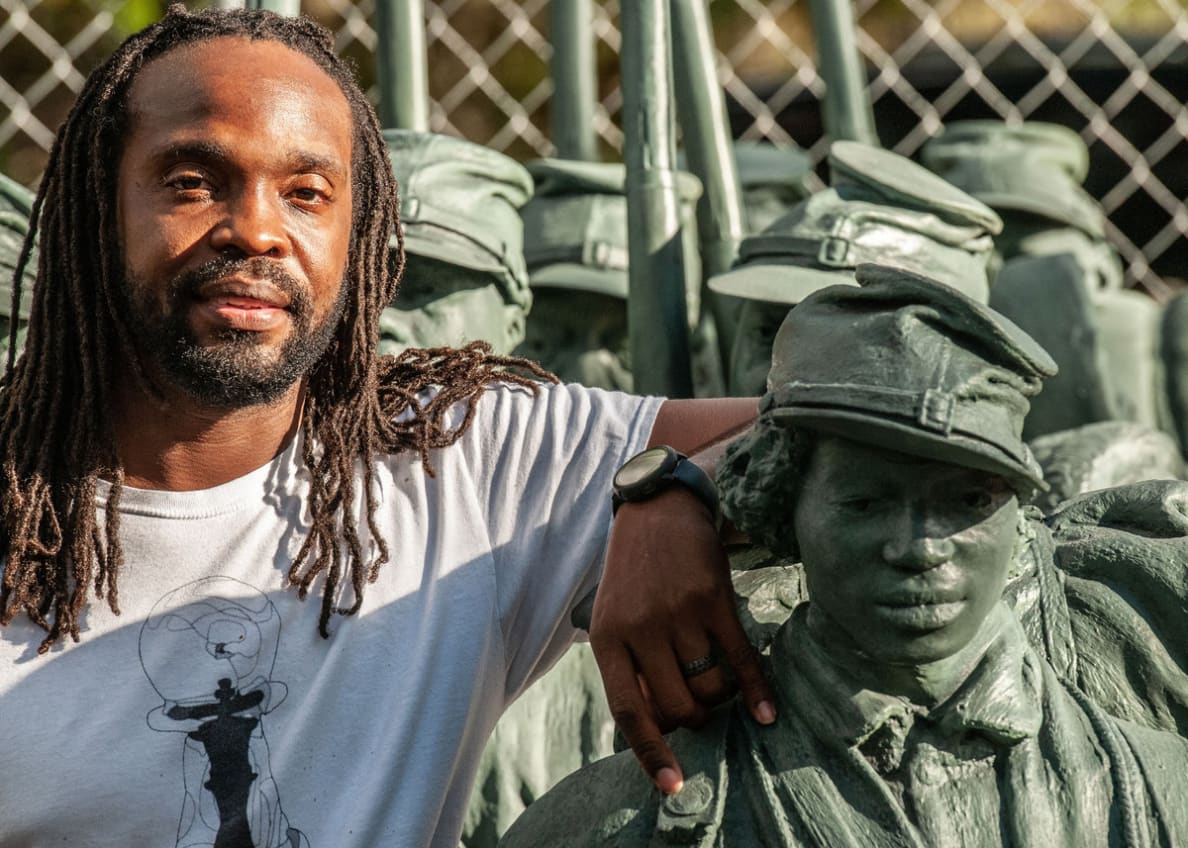
Alan Cradick/Handout/Cameron Art Museum
“When they put all those Confederate heroes on a pedestal, they were trying to create a hierarchy,” Hayes told me. “I’m trying to create something that lights a spark in people. It’s important to me that people can walk right up and experience it. I want people to walk around the statues. I want to create a connection between the viewer and the soldiers. I want people to look into the eyes of these men.”
These bronze men have an intriguing origin story of their own. After researching Wilmington’s role in the Civil War, Hayes decided he wanted to cast descendants of the U.S. Colored Troops. Calls went out to the African American community and to USCT re-enactor groups. The response was enthusiastic. A total of 18 people volunteered to serve as models. Of the 11 who were chosen, seven were descendants of U.S. Colored Troops. The past came to life when Hayes spread strips of wet plaster on the men’s faces, creating molds that were cast in bronze and produced, as Hayes and Wilson had hoped, unmistakable echoes of the determination and valor of Black troops fighting both for the Union and their personal freedom.
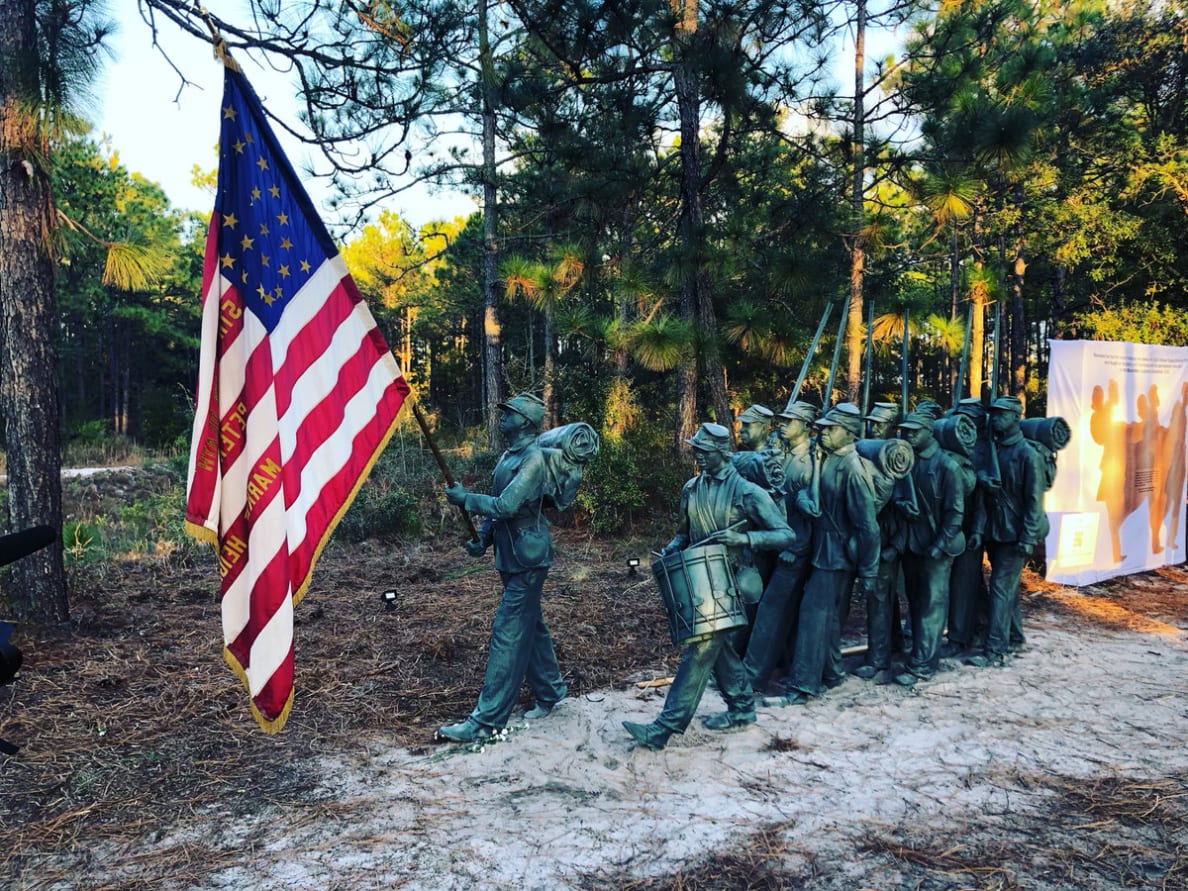
Bill Morris
The monument consists of three rows of three soldiers marching behind a flag bearer and a drummer boy. The three soldiers in the back are sliced in half vertically, creating a large flat surface on the backside of the monument. There the names of the 1,820 Black soldiers who fought at Forks Road will be engraved. Say their names.
Hayes is aware that “Boundless” has flipped the South’s prevailing narrative about the Civil War. By glorifying the valor of once-invisible Black soldiers, “Boundless” makes the point that the Civil War was not a contest between gallant white gentlemen on horseback—Gen. Robert E. Lee aboard Traveler, or Union Col. Robert Gould Shaw leading his Black troops to their doom at the Battle of Fort Wagner in South Carolina. Many of the Black Union soldiers were former slaves who escaped and joined the army, then traveled on foot and fought hand-to-hand to bring an end to a system that had once held them in bondage. “Boundless” is an overdue stroke of revisionism and, Hayes hopes, a beginning: “I hope this starts a conversation and opens eyes to what happened here, how these men were treated, how they became colored troops.”
For Wilson, the unveiling ceremony was an “emotional and moving” experience, the culmination of 13 years of work. “In the South we’ve all been taught a skewed version of Civil War history,” she said. “We have to acknowledge both what happened and the ways the truth was consciously suppressed. Bringing these little-known stories to light may help us heal, and it may even help us build a brighter future.”
